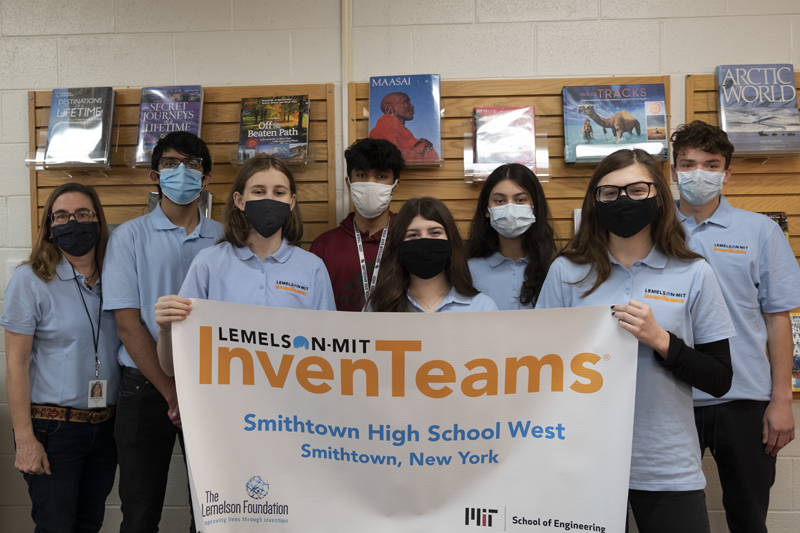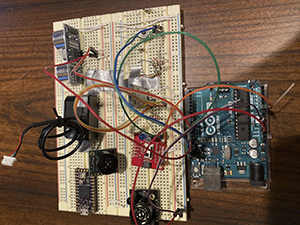UCLA Engineering Grad Student Helps High School Inventors Develop Personal Distance Monitors for Children with Autism

Photo: Smithtown High School West
Smithtown High School West InvenTeam
From developing a low-cost ventilator using household supplies to mentoring high school students, Glen Meyerowitz has been hard at work applying his problem-solving skills as an electrical engineering graduate student at UCLA Samueli towards helping the community.
Since last August, Meyerowitz has been volunteering as a mentor to a group of students at Smithtown High School West on Long Island, New York. where his mother is a science research teacher. Figueiredo’s students work on projects ranging from studying the evolution of nervous system proteins to developing physical devices to solve a specific problem.
Smithtown High School West has recently been selected as one of 13 high schools across the U.S. to receive a prestigious $10,000 grant from the Lemelson-MIT program for outstanding innovation and invention. The program will fund the Lemelson-MIT InvenTeams composed of high school students, teachers and mentors to invent technological solutions to real-world problems in nine months.

Meyerowitz, a former SpaceX engineer and a UCLA Biodesign Fellow, is guiding the team of nine students over Zoom sessions to develop a small, portable and non-intrusive infrared (IR) sensor device that can be worn as a belt or a necklace to notify users of their distance to other individuals. The device will integrate with a custom smartphone app to track the wearers’ progress and help the users and their teachers manage their personal space.
“People constantly emit heat, which can be measured on an IR sensor, similar to night vision goggles,” Meyerowitz explained. “An IR sensor can measure the intensity of the signal which can be used in an algorithm to estimate the distance between that person and the sensor.”
The students are building a functional prototype with a corresponding app, which will be showcased at a mid-year technical review with community members and grant coordinators in late February prior to the presentation of a final prototype at EurekaFest, a virtual invention celebration in June.
The device was originally envisioned to support those on the autism spectrum but could also function as a tool to measure six feet of proper social distancing in light of the COVID-19 pandemic.
“I have enjoyed getting to connect with and help these students on their work,” Meyerowitz said. “It is great that they are able to focus their efforts on a project that can have a positive impact on their peers at a time when so many of us are struggling to stay afloat. I am excited to see what they develop over the next few months.”
Zoe Curran contributed to this story.
